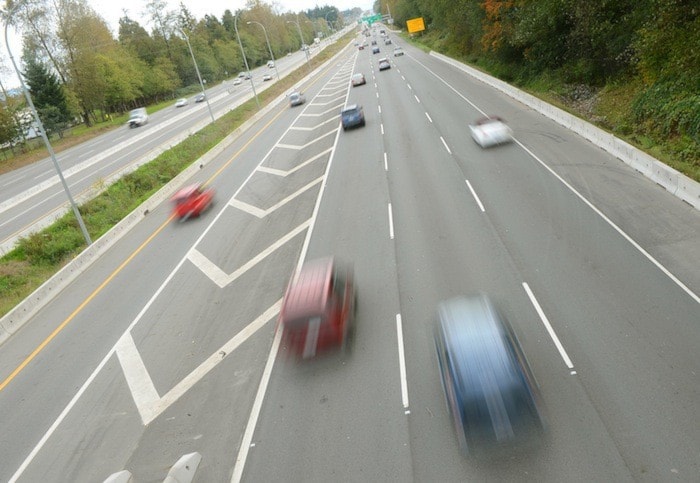A new poll has found more B.C. residents support a return to photo radar than endorse higher speed limits on the province's highways.
The Insights West poll conducted for Black Press found 37 per cent back higher highway speed limits, while 55 per cent said they should be kept the same and five per cent would lower them.
Meanwhile, 39 per cent support bringing back photo radar to help curb speeding, while 53 per cent were opposed.
The camera-equipped roadside vans automatically detected speeders and issued tickets by mail in the 1990s and were eliminated in 2001 by the incoming BC Liberal government.
The findings split sharply on gender lines, with women and older drivers much more likely to oppose higher speed limits and support photo radar speed enforcement.
Just 25 per cent of women said highway speed limits should be raised (65 per cent said they should stay the same), while 50 per cent of men were in favour of higher limits.
Among respondents aged 55 and up, 31 per cent supported higher limits, while twice as many – 62 per cent – said they shouldn't change.
A third of men supported bringing back photo radar, while that jumped to 43 per cent among women and 48 per cent among those 55 and over – more than the 46 per cent in that age group who oppose its return.
Insights West vice-president Mario Canseco said the support for photo radar may be less about bringing back what many considered an unfair cash grab and more a reflection of frustration that other drivers break the law without being punished.
He said the results on speed limit reform show significant support for change, but added the gender gap was a surprise.
"Half of men driving out there say we're just going too slow, we should be going a little bit faster. But they're only supported by one in four women."
Canseco said it appears those in favour of higher speed limits have so far been "a little bit louder" in rallying support than those worried about change.
But he suggested a measured, careful approach by the government to lift limits on selected routes may win yet majority support.
Transportation Minister Todd Stone kicked off a public review of B.C. rural highway speed limits last Friday with a series of eight regional public forums running to Jan. 24.
For details of the Rural Highway Safety and Speed Review or to register your comment, see http://engage.gov.bc.ca/safetyandspeedreview.
Stone has indicated the government may be prepared to raise speed limits on some rural highways, which are now mostly posted at 100 kilometres per hour, except for the 110 limit on the Coquihalla and parts of the Okanagan Connector.
Stone said research has shown the biggest danger are vehicles that are driving much faster or slower than the prevailing speed on the route.
"It's not speed in and of itself which kills. It's variations in speed," he said.
Improved roads and vehicle safety are among the reasons he cites for potentially higher limits.
The review is also examining issues like the dangers of wildlife collisions, snow tire regulations and slower moving vehicles that don't keep pace with traffic or clog passing lanes.
The government has repeatedly said it has no plans to reintroduce photo radar and Stone said the review won't consider enforcement changes.


